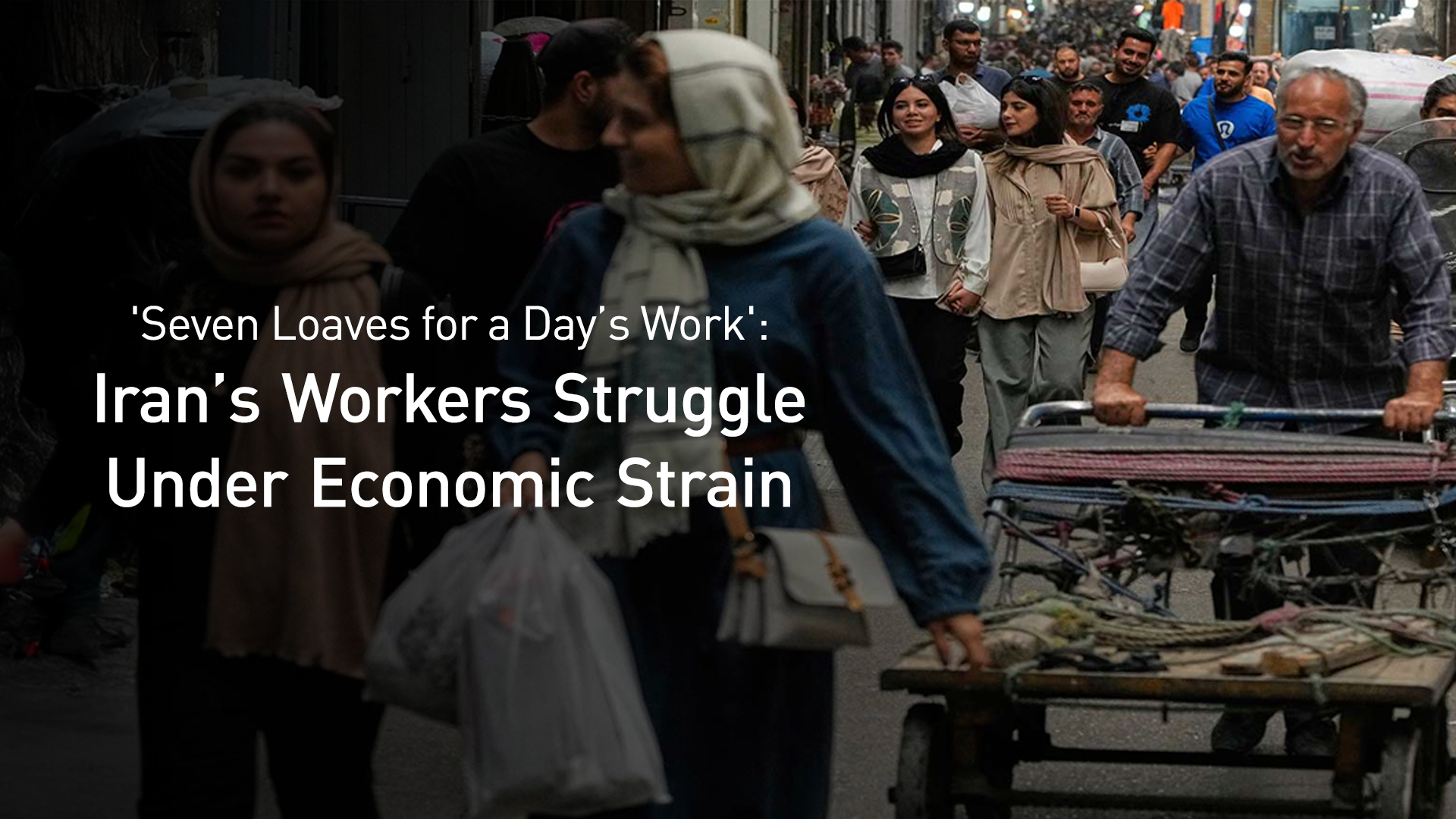'Seven Loaves for a Day’s Work': Iran’s Workers Struggle Under Economic Strain
Rising Prices and Wage Pressures Expose the Deepening Struggles of Iranian Workers Amid Subsidy Cuts and Currency Reforms

ERBIL (Kurdistan24) — For millions of Iranian workers, the simple act of buying bread has become a symbol of economic despair. According to the state-run Iranian Labour News Agency (ILNA), the official minimum daily wage of 346,000 tomans now buys only seven loaves of sangak bread in Tehran. “A worker labors for a full day only to buy plain bread,” ILNA reported, capturing the dramatic collapse of purchasing power.
Monthly salaries, officially set at around 14 million tomans, fall far short of covering basic needs as prices of staples soar. Just a few years ago, a day’s wage could buy a kilogram of meat; today, workers must save three days' wages to afford the same. “Now they even sell meat in installments,” labor activist Maziar Gilani-Nejad told ILNA. “This is not just poverty—it is humiliation for the working class.”
The Human Toll of Subsidy Cuts
Workers accuse the government of abandoning them by stripping away subsidies on essential goods such as bread and medicine. A 52 percent rise in bread prices this summer has forced families to cut back on meals. Medicine has surged by as much as 400 percent in recent months, and some patients are reportedly skipping treatment altogether. “The government refuses to subsidize the people’s bread and medicine,” Gilani-Nejad said. “Yet billions of dollars are spent on cars and luxury imports that only the wealthy enjoy.”
Education costs have also jumped. The Education Ministry admitted that school textbooks are 60 percent more expensive this year, further straining households. “What kind of future can we promise our children when bread, education, and medicine are all out of reach?” asked one Tehran factory worker, speaking anonymously to ILNA.
Currency Reform Seen as a “New Earthquake”
At the heart of these anxieties is the government’s push to unify Iran’s multiple exchange rates. Officials argue the reform will stabilize markets and curb corruption. But for ordinary families, the fear is simple: another shock that will send food and medicine prices spiraling even higher. “The move toward a single currency rate is not economic reform—it is another earthquake that will bury the working class,” ILNA warned in its report.
Iran’s Statistical Center says inflation reached 41.2 percent in July, the highest in two years, with no signs of slowing. As incomes stagnate and prices climb, workers are bracing for more hardship. Many warn that frustration is nearing a breaking point. “When a father cannot feed his children, when a mother cannot afford medicine, this anger will spill into the streets,” a labor organizer cautioned.
For now, families are tightening their belts, cutting meals, and buying essentials on credit. But activists fear that continued subsidy cuts and currency reform will deepen inequality and spark social unrest. “The government’s policies have swept the poor people’s tables clean,” Gilani-Nejad said.
Years of Sanctions and Economic Strain
Iran’s economy has been under intense pressure for more than a decade, largely due to international sanctions targeting its oil exports, banking sector, and access to global financial systems. The re-imposition of U.S. sanctions in 2018, following Washington’s withdrawal from the 2015 nuclear deal, dealt a particularly heavy blow, cutting off key revenue streams and limiting the country’s ability to import essential goods.
The effects of sanctions have been compounded by chronic inflation, currency volatility, and rising unemployment. The Iranian rial has lost significant value over the years, eroding purchasing power for ordinary citizens and making imported goods—ranging from medicine to food staples—exponentially more expensive.
According to official statistics, inflation in 2024 reached over 40 percent, its highest level in two decades, highlighting the daily hardships faced by workers and low-income households.
Experts and domestic critics also point to mismanagement of financial resources as a key factor aggravating economic difficulties. Large sums of public money have been allocated to luxury imports, subsidized loans for the wealthy, and state-backed projects that often benefit politically connected elites, while essential social programs, healthcare, and food subsidies have been reduced.
This uneven allocation of resources has deepened inequality and intensified the impact of global sanctions on ordinary Iranians.
In combination, years of external economic pressure and internal mismanagement have created a fragile financial environment. Rising prices for basic necessities, shrinking real wages, and uncertainty over government policies, including subsidy cuts and currency reforms, have left millions of Iranians struggling to meet daily needs and have fueled growing public anxiety about their economic future.
